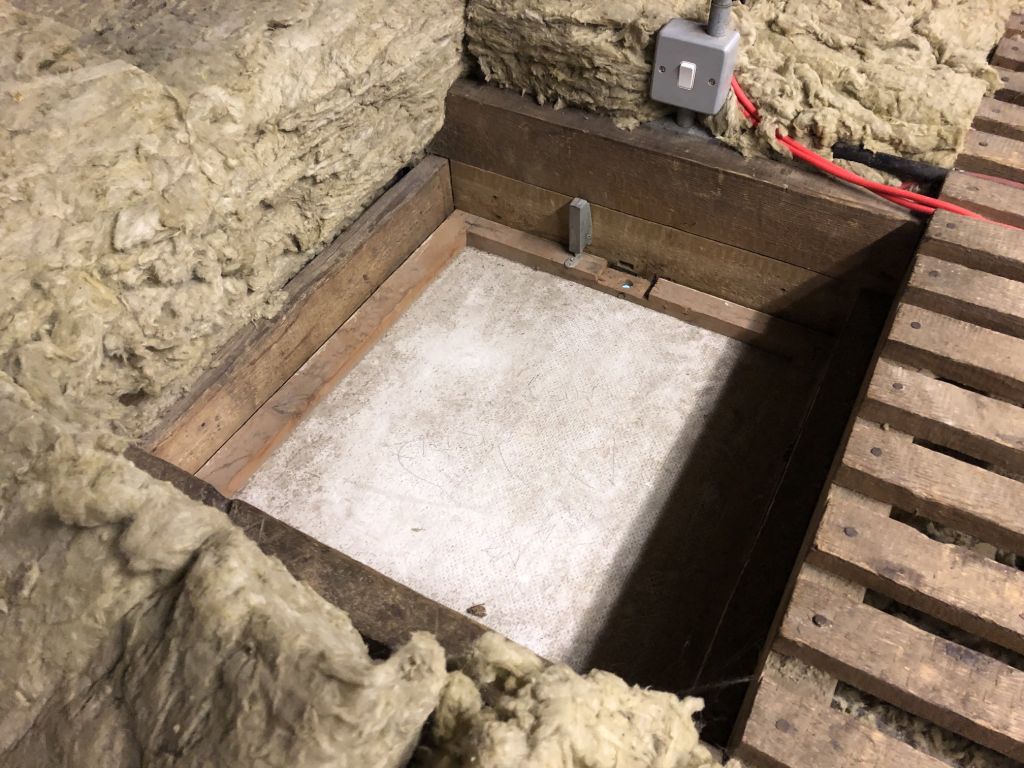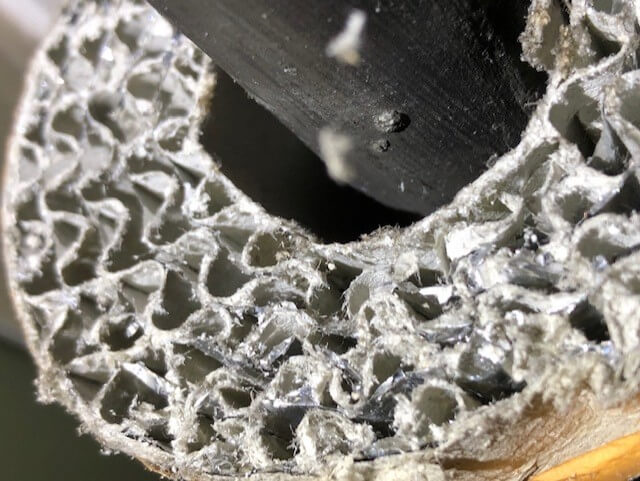Asbestos Encapsulation: The Ultimate Guide
Last Updated on 10 October 2023
Asbestos is a hazardous material that poses serious health risks when it is disturbed or damaged. Asbestos encapsulation is a proven method to effectively manage asbestos-containing materials (ACMs) and prevent their harmful fibres being released into the air.
In this comprehensive guide, we will delve into the details of encapsulating asbestos, covering everything from its definition and process to its benefits and regulatory compliance.
So If you are looking for expert insights on the subject, then you have come to the right place!
What is Asbestos Encapsulation?
Asbestos encapsulation is a process that involves covering or enclosing ACMs with a protective coating or material to prevent the release of fibres into the air.
This method creates a barrier that seals off the asbestos fibres and prevents them from becoming airborne, reducing the risk of exposure to asbestos.
Encapsulation is typically used as a medium to long-term solution for managing ACMs in situ, rather than removing them, which can be costly and disruptive.
The Process of Encapsulating Asbestos
The process of asbestos encapsulation typically involves the following steps:-
1. Assessment and Survey
Before starting the asbestos encapsulation process, a thorough assessment and survey of the ACMs is conducted by qualified asbestos professionals. This includes identifying the type, condition, and location of the ACMs, as well as assessing the risks associated with their encapsulation.
2. Preparation
The area to be encapsulated is prepared by isolating it from the rest of the building to prevent the spread of asbestos fibres. This may involve sealing off doors, windows, and ventilation systems, as well as setting up negative air pressure units and using specialized equipment, such as HEPA filters, to capture airborne asbestos fibres.
3. Cleaning and Repairing
The ACMs are cleaned and repaired, if necessary, to ensure that they are in good condition before asbestos encapsulation. This may involve removing any loose or damaged asbestos fibres and repairing or sealing any cracks or gaps in the ACMs.
4. Encapsulation
A specialised encapsulation material or coating is applied to the ACMs to create a protective barrier. This may involve spraying, brushing, or troweling the encapsulation material onto the ACMs, depending on the type and condition of the ACMs.
5. Inspection and Testing
After the encapsulation process is complete, a thorough inspection and testing of the encapsulated ACMs is conducted to ensure that the encapsulation is effective and in compliance with regulatory requirements. This may involve visual inspections, air monitoring, and sample testing to verify the integrity and performance of the encapsulated ACMs.
6. Monitoring and Maintenance
Once the encapsulation is complete, regular monitoring and maintenance of the encapsulated ACMs are essential to ensure their ongoing effectiveness. This may involve periodic inspections, air monitoring, and reapplication of the encapsulation material, if necessary, to maintain the integrity of the encapsulated ACMs. All ACMs should be managed as part of an asbestos management plan AMP and be reinspected at least annually or more frequently if the risk dictates.

AIB ceiling hatch, seen from the roof space in a school, that should be encapsulated and hasn’t been, therefore posing an exposure risk.
Benefits of Asbestos Encapsulation
Asbestos encapsulation offers several benefits over other methods of asbestos management, including:-
Cost-effectiveness
Encapsulation is generally more cost-effective compared to removal, as it eliminates the need for costly removal procedures, such as containment, removal, and disposal.
Minimally Disruptive
Encapsulation allows ACMs to remain in place, minimising disruption to building occupants and operations, and reducing the need for relocation or temporary closure of the building.
Preservation of Historic Structures
Encapsulating asbestos can be an ideal solution for preserving historic structures that contain asbestos, as it allows for the retention of the original architectural features and finishes.
Long-term Solution
Encapsulation provides a long-term solution for managing ACMs in situ, as the encapsulation creates a protective barrier around ACMs. Furthermore, this helps to contain and stabilise the asbestos, reducing the risk of exposure to asbestos fibres over time.
Regulatory Compliance for Asbestos Encapsulation
Asbestos encapsulation is subject to strict regulatory requirements to ensure proper handling and management of ACMs.
In the UK, the Control of Asbestos Regulations 2012 (CAR 2012) sets out the legal obligations for managing asbestos in non-domestic properties, including requirements for encapsulation.
It is important to comply with these regulations to ensure the safety of workers, building occupants, and the environment.
Frequently Asked Questions
Is asbestos encapsulation safe?
Yes, encapsulation, when performed by qualified and trained professionals following proper procedures, can be a safe and effective method for managing ACMs. The process creates a protective barrier that prevents the release of asbestos fibres into the air, reducing the risk of exposure.
How long does encapsulation last?
Encapsulation is designed to be a medium to long-term solution for managing ACMs. The lifespan of encapsulation can vary depending on factors such as the type of encapsulation material used, the condition of the ACMs, and the environmental conditions. Regular monitoring and maintenance are essential to ensure the ongoing effectiveness of encapsulation.
Can encapsulated asbestos be disturbed in the future?
Encapsulated asbestos should not be disturbed unless necessary. However, If any work is planned that may disturb the encapsulated ACMs, proper precautions and procedures should be followed, including conducting a risk assessment, implementing control measures, and engaging qualified asbestos professionals.
Can encapsulated asbestos be removed in the future?
Encapsulated asbestos can be removed in the future if deemed necessary or if the encapsulation reaches the end of its lifespan. However, removal of encapsulated asbestos should only be carried out by qualified and licensed asbestos removal contractors following proper procedures and regulatory requirements.
Is encapsulated asbestos still a risk for building occupants?
When encapsulated asbestos is in good condition and properly maintained, the risk to building occupants is minimal. However, it is important to conduct regular inspections, air monitoring, and maintenance to ensure the integrity of the encapsulated ACMs and to minimise any potential risks. Information and training should also be provided to those who may work in areas where the asbestos is present.
How much does it cost to encapsulate asbestos in the UK?
The cost of encapsulating asbestos in the UK can vary depending on several factors, including the size and complexity of the project, the location and condition of the asbestos-containing materials (ACMs). The cost will also depend on the type of encapsulation material used, and the expertise and experience of the contractor.
Encapsulation is typically considered a more cost-effective option compared to removal, as it allows the ACMs to remain in place while providing a protective barrier. The cost of encapsulation may include factors such as labour, materials, equipment, permits, and disposal fees, if applicable.
The cost of encapsulating asbestos in the UK can vary considerably. It is important to obtain detailed quotes from reputable contractors, who will assess the specific requirements of the project and provide an accurate cost estimate based on factors such as the type of ACMs, the location, and the encapsulation method.
It is crucial to note that cost should not be the sole determining factor when it comes to asbestos encapsulation.
Quality and safety should be the top priority, and it is essential to engage qualified and licensed asbestos professionals who follow all regulatory requirements and best practices for encapsulating asbestos to ensure the safety of workers, occupants, and the environment.
It is also important to note that the cost of encapsulation is a one-time expense, whereas ongoing monitoring, maintenance, and periodic inspections will also be required to ensure the continued effectiveness of the encapsulation and compliance with regulatory requirements.
Are there any disadvantages to encapsulating asbestos?
Yes, there are some disadvantages to encapsulating asbestos.
While asbestos encapsulation may be considered a medium to long term solution to reduce asbestos exposure, it has limitations and potential drawbacks, including:-
-
Limited effectiveness:
Encapsulation may not completely prevent the release of asbestos fibres. Over time, encapsulation materials can degrade, crack, or become damaged, which could result in the release of harmful fibres into the air, posing a risk to occupants of the building.
-
Maintenance challenges:
Encapsulated ACMs may require ongoing maintenance, such as regular inspection and monitoring, to ensure the integrity of the encapsulation. This can be time-consuming and costly, and failure to properly maintain the encapsulated materials could lead to increased asbestos exposure.
-
Aesthetics and space limitations:
Encapsulating asbestos-containing materials may alter the appearance or functionality of the affected area. For example, encapsulating asbestos-containing pipe insulation may result in increased pipe diameter or changes to the layout of the area, which could impact aesthetics or available space.
-
Legal and regulatory considerations:
Encapsulation may not always comply with government regulations, which have specific requirements for handling, removal, and disposal of ACMs. Encapsulated asbestos may still be considered a potential liability and could impact the resale value or insurability of a property.
-
Long-term costs:
Whilst encapsulating may be initially less expensive than full asbestos removal, it may not be the most cost-effective solution in the long run. Ongoing maintenance, monitoring, and potential future removal or encapsulation updates can add up over time and result in higher costs compared to other methods. Removal of asbestos can attract tax relief under qualifying circumstances.
-
Health risks for workers:
During the encapsulation process, workers may be exposed to harmful fibres if proper precautions, such as containment and personal protective equipment, are not followed diligently. This could pose health risks to workers involved in the encapsulation process.

Example of asbestos pipe insulation that needs to be encapsulated
Conclusion
In conclusion, asbestos encapsulation is a proven method for managing ACMs and preventing the release of asbestos fibres into the air. It is a cost-effective, minimally disruptive, and medium to long-term solution for preserving historic structures, complying with regulatory requirements, and ensuring the safety of workers and building occupants.
If you suspect the presence of asbestos in your building, it is essential to engage qualified asbestos professionals to conduct a thorough assessment and determine the appropriate management strategy, which may include encapsulation.
It is important to note that encapsulated asbestos should not be disturbed unless necessary, and any work that may disturb the encapsulated ACMs should be carried out by qualified and licensed asbestos professionals following proper procedures and regulatory requirements.
Furthermore, removal of encapsulated asbestos should only be considered if deemed necessary or if the encapsulated asbestos reaches the end of its lifespan, and should be carried out by qualified asbestos removal contractors in compliance with regulatory requirements.
Overall, the long-term effect of asbestos encapsulation is to provide a safe and effective solution for managing ACMs. It also helps in preventing the release of asbestos fibres, ensuring the continued protection of building occupants, workers, and the environment from the hazards of asbestos exposure.
Need asbestos advice?
If you need any help or advice at all with any aspect of asbestos management, then we’ll be very happy to assist you. Give us a call and our experts will give you some advice and guidance on whatever if is you’re concerned about.
Please contact us on 0800 141 2676, email us at info@rbasbestos.co.uk or fill in the form below.
Our professional asbestos surveyors conduct asbestos inspections and asbestos surveys every day across the UK on all types of properties, both residential and commercial, for private home owners and commercial property Managers and owners. So when it comes to managing asbestos in your property, you’re in very safe hands with RB Asbestos Consultants.

